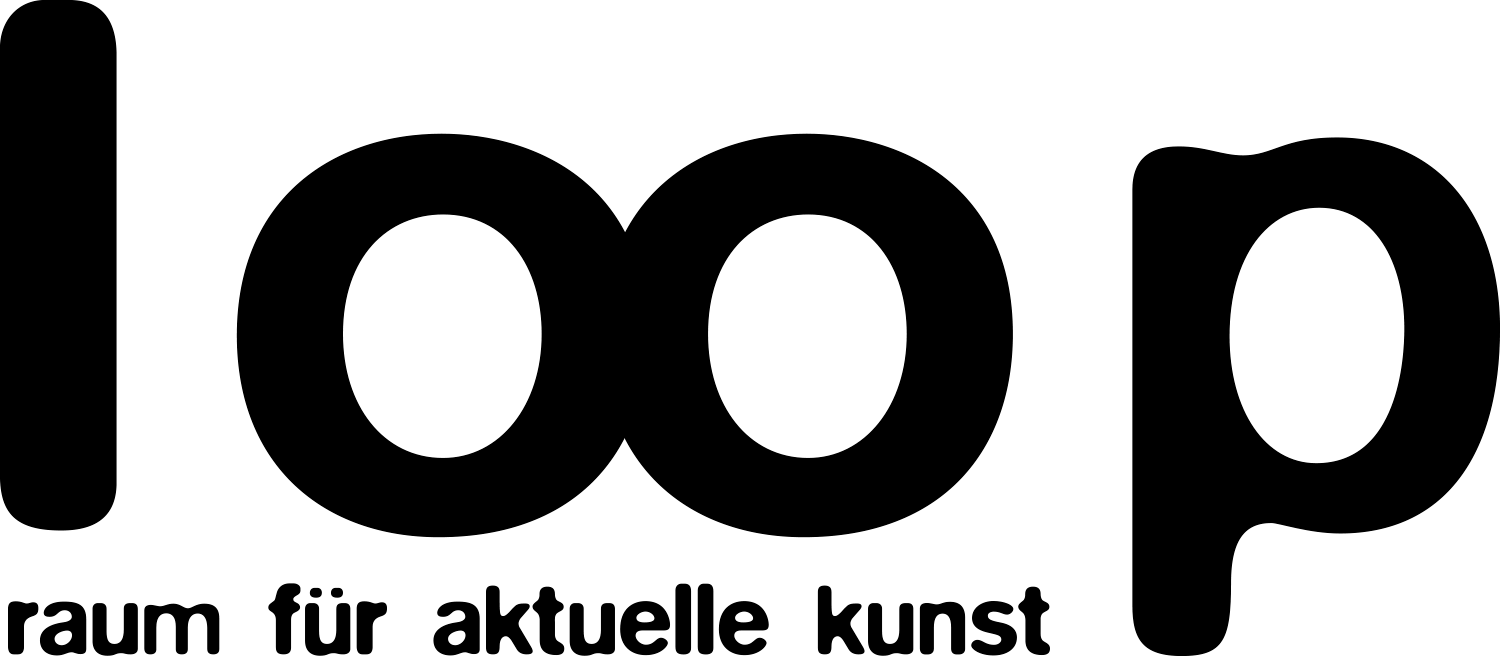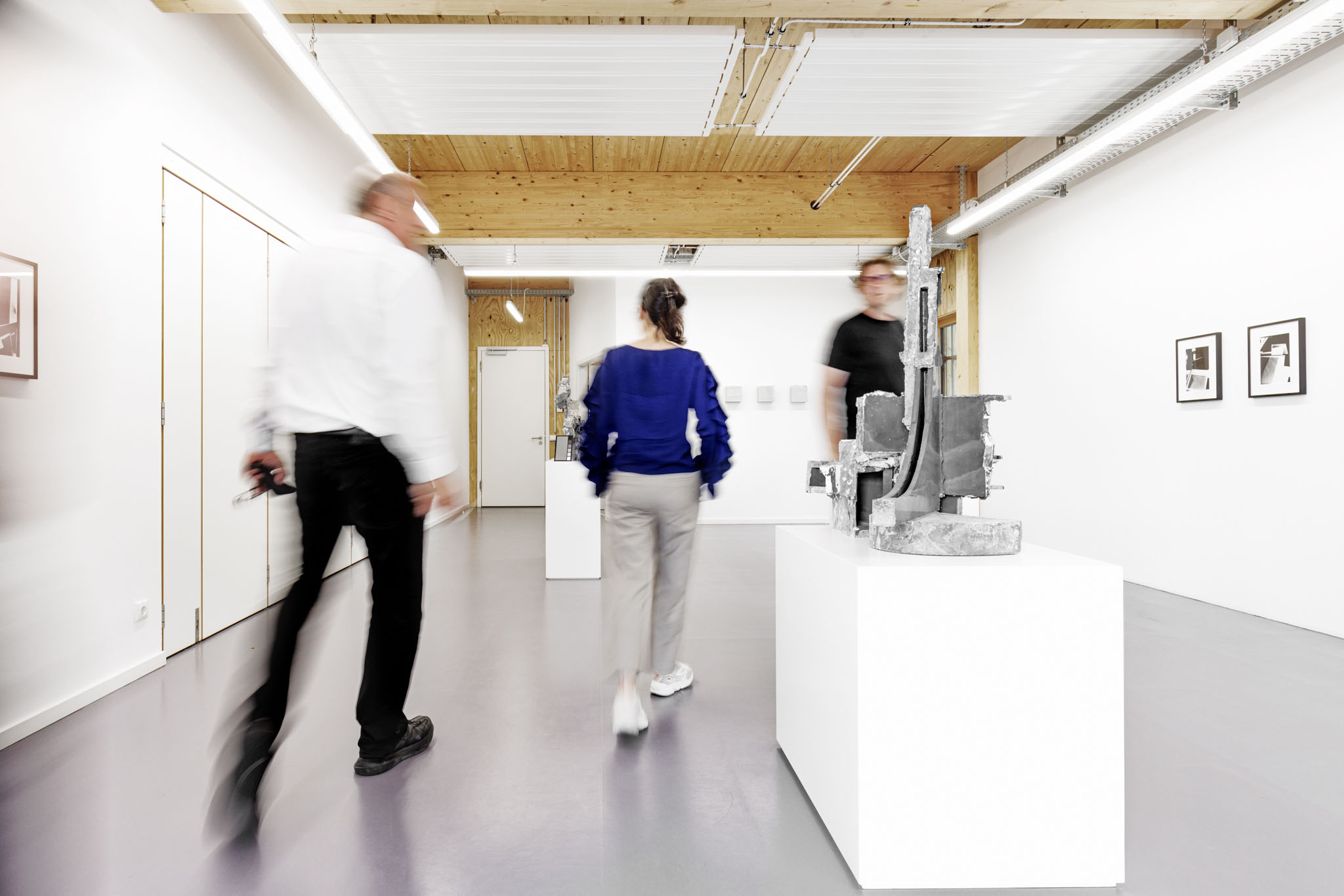
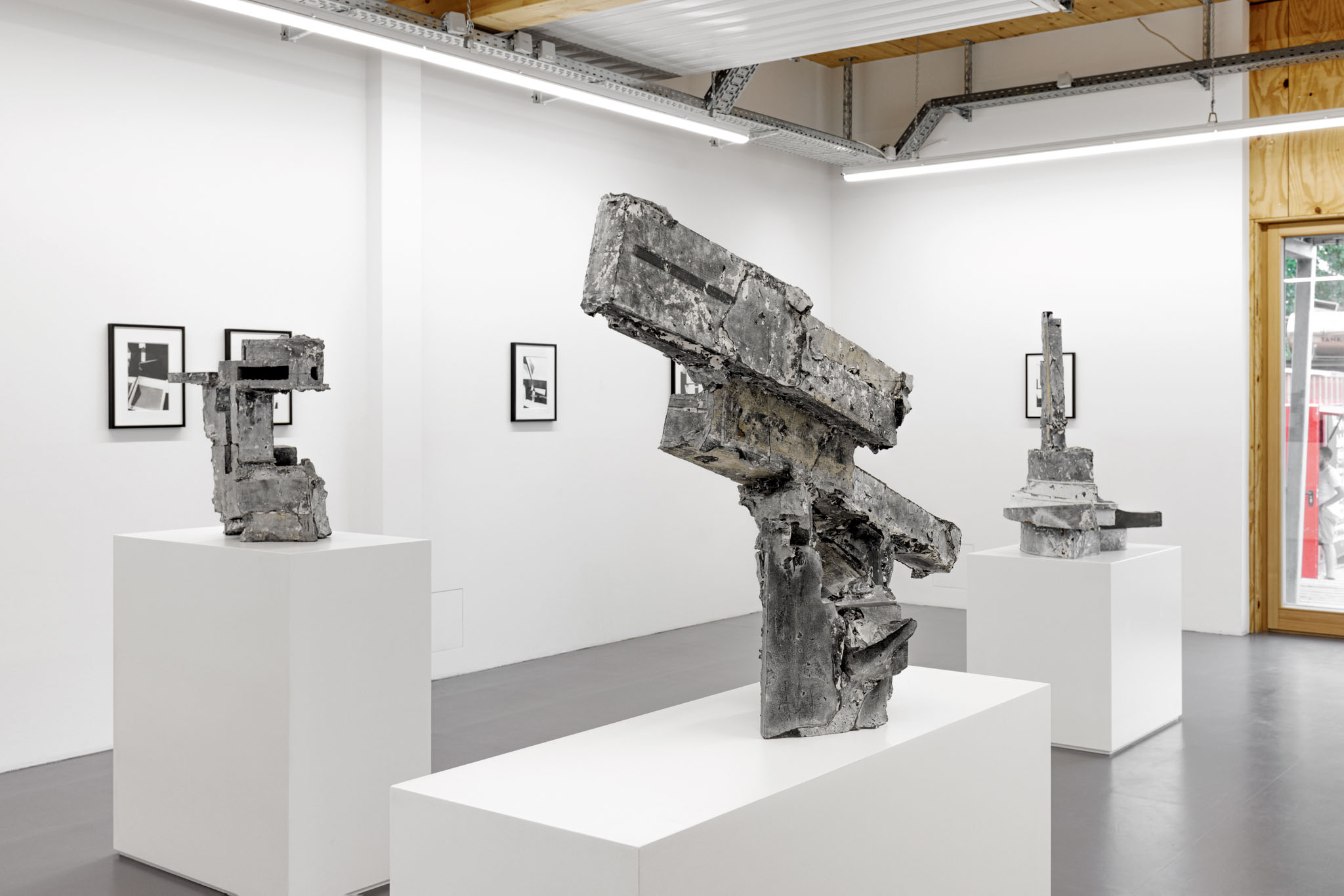

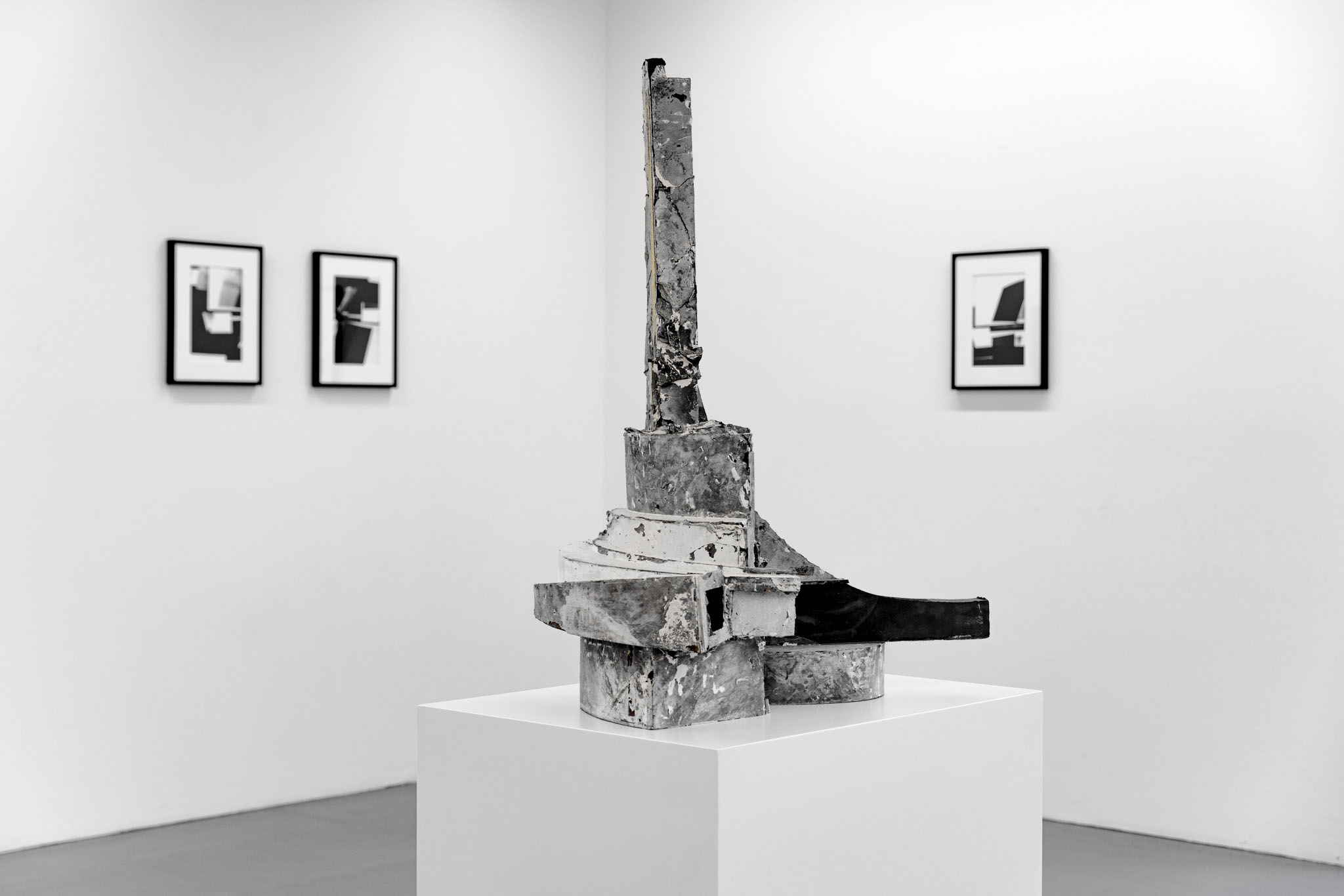




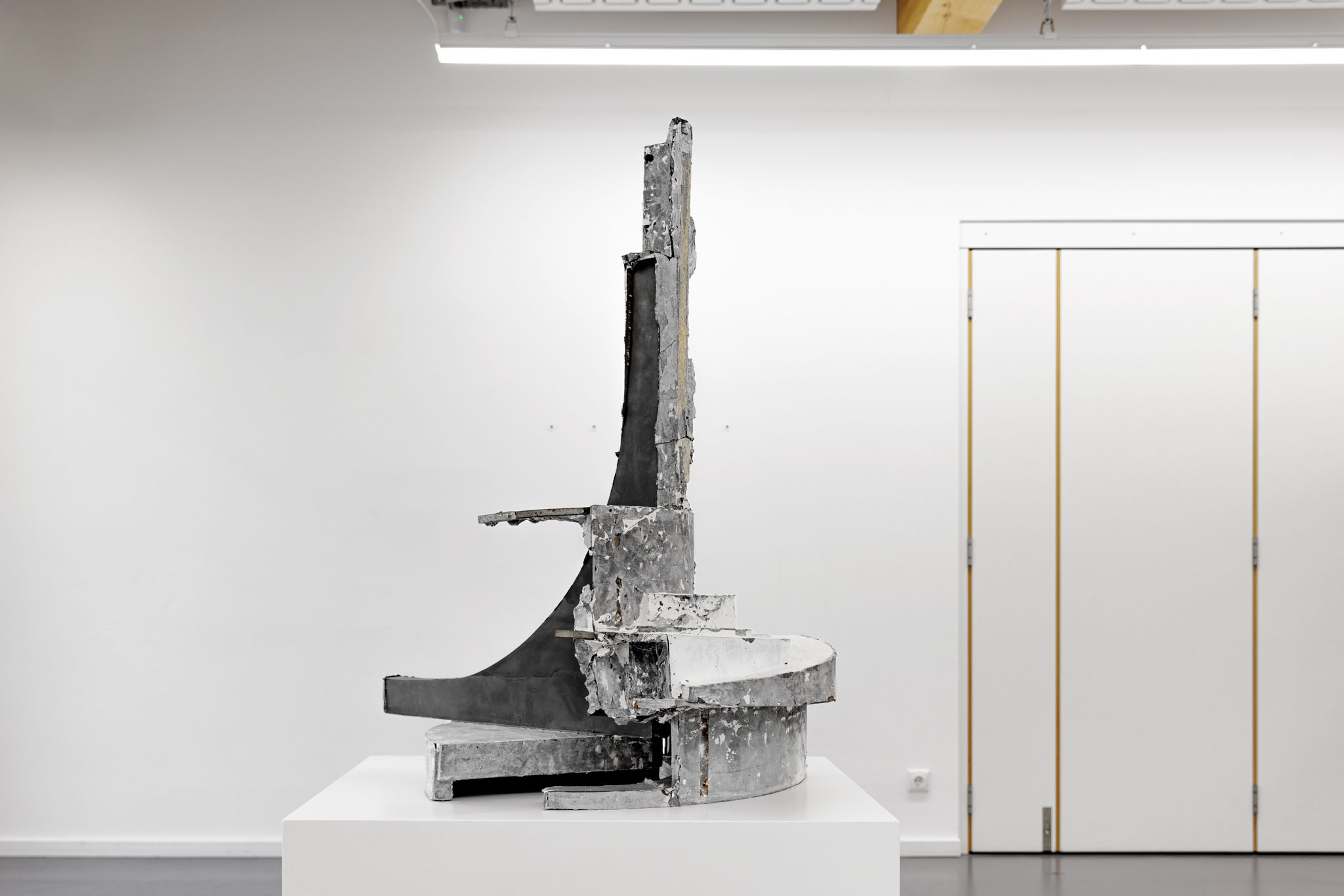
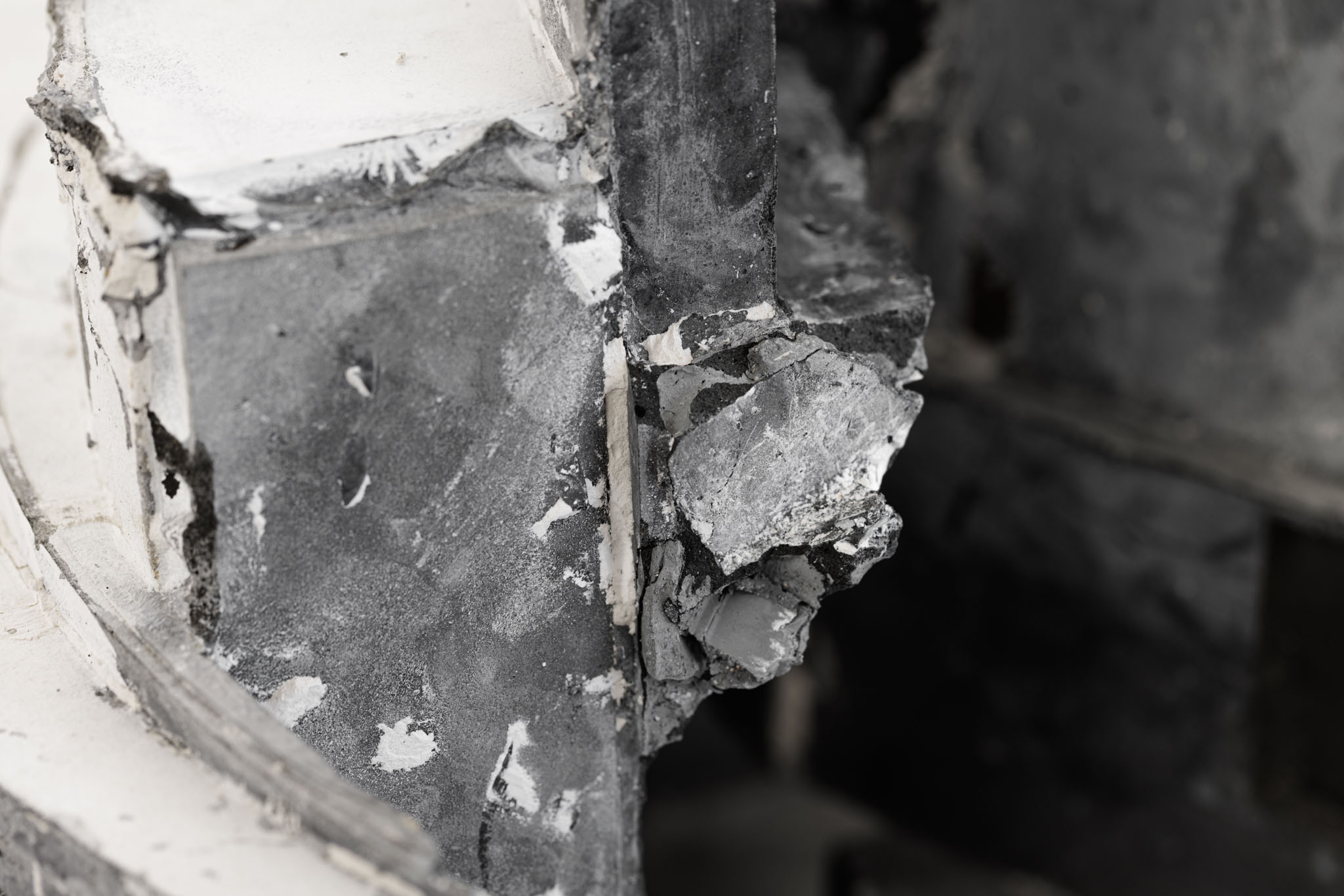

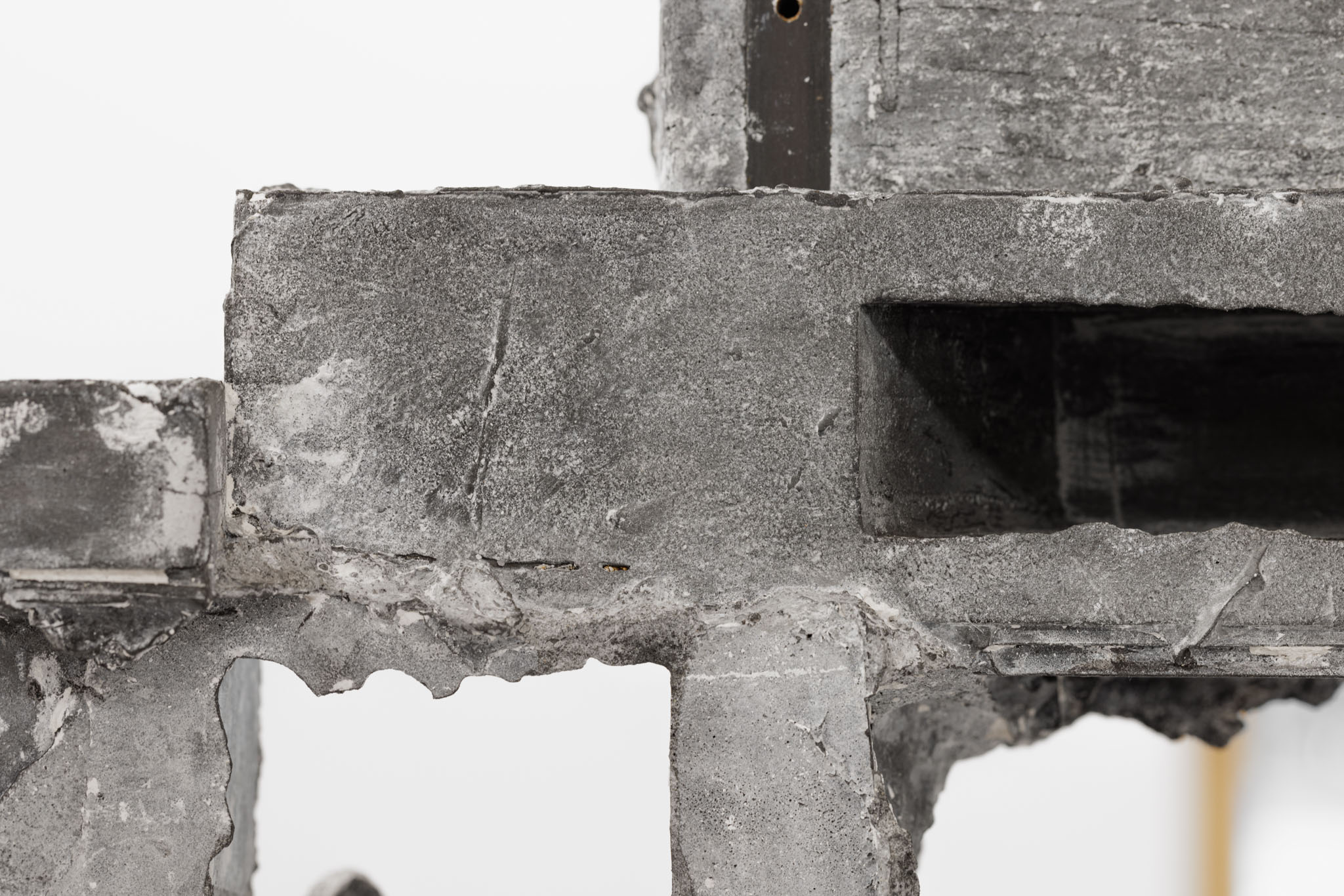
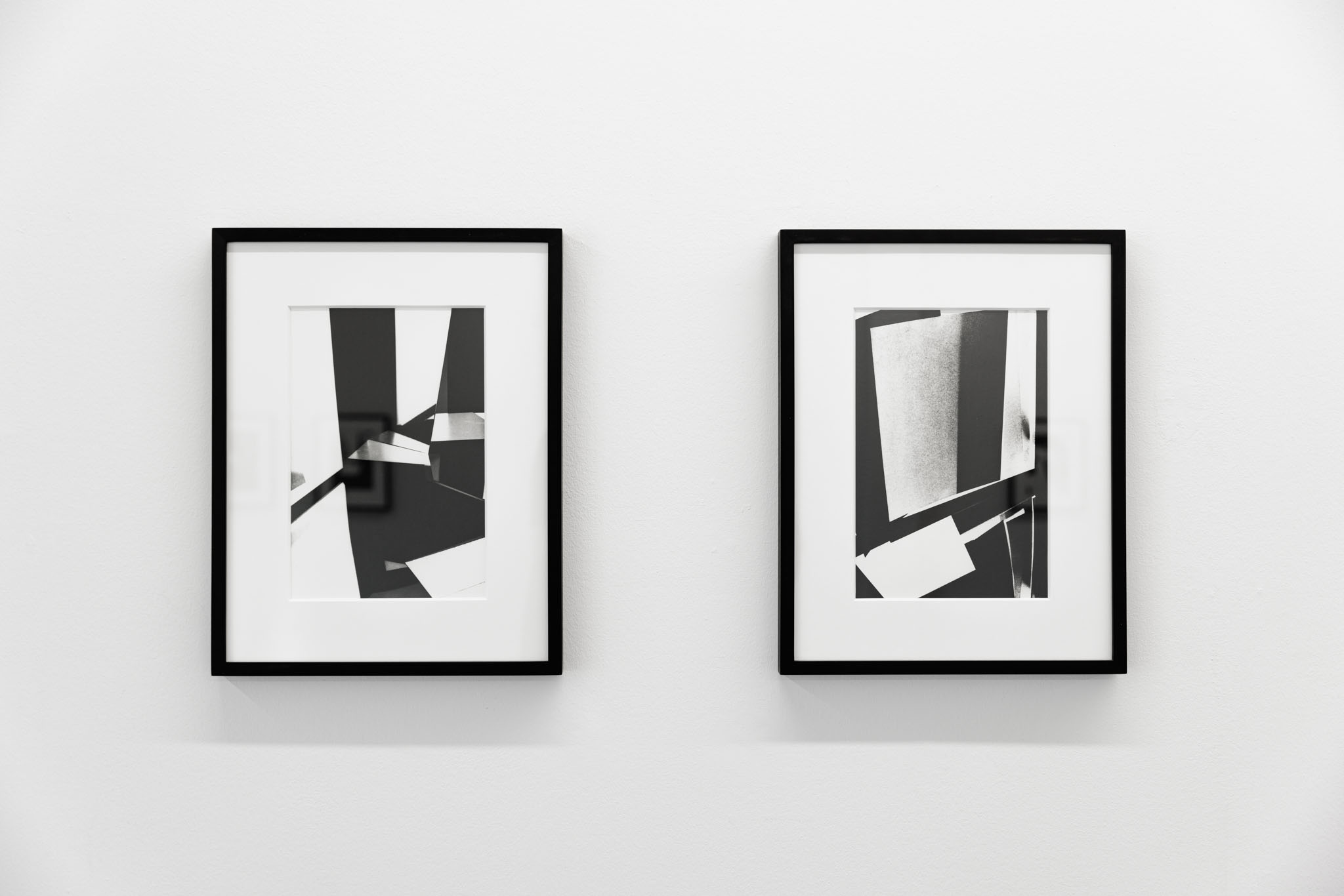

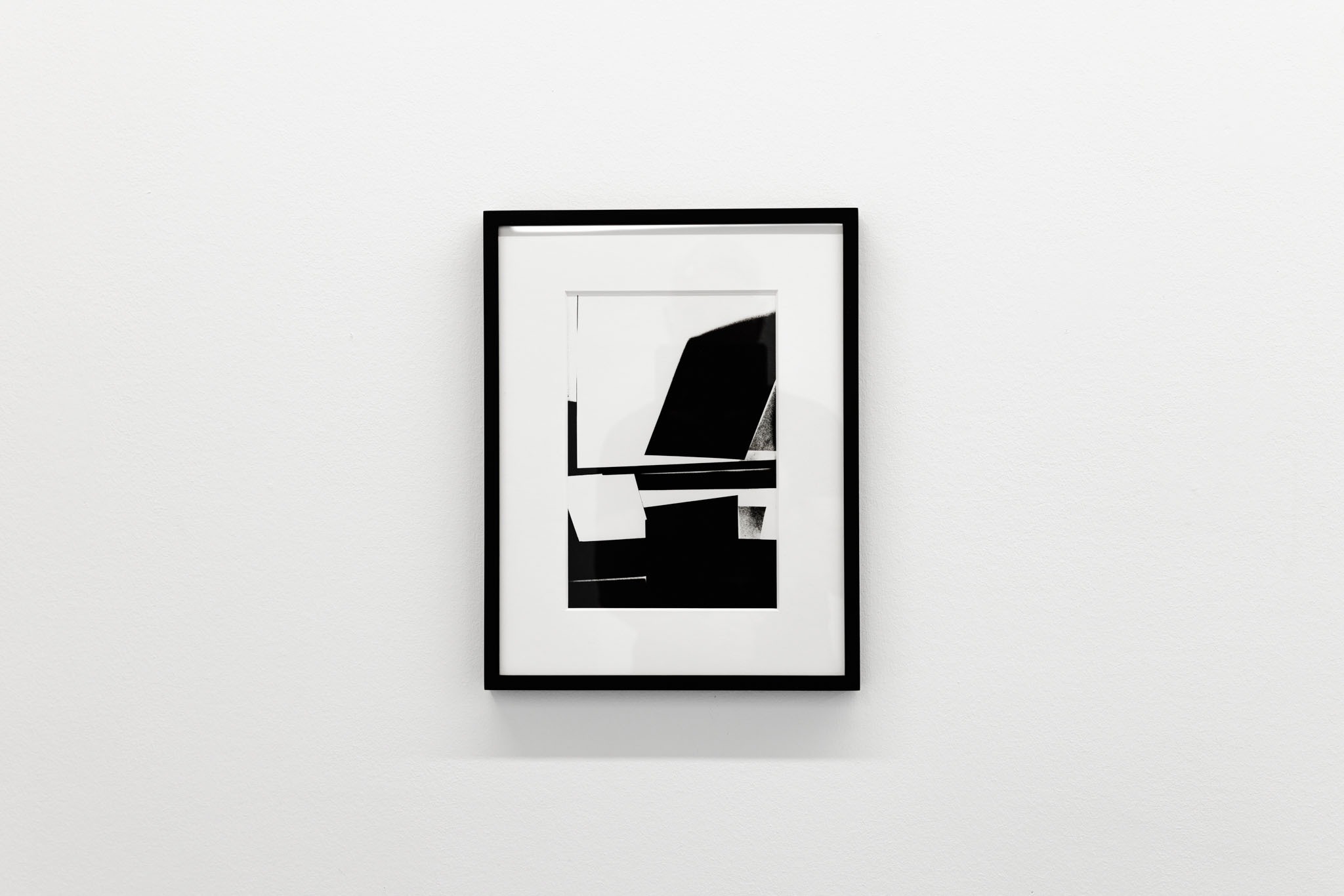

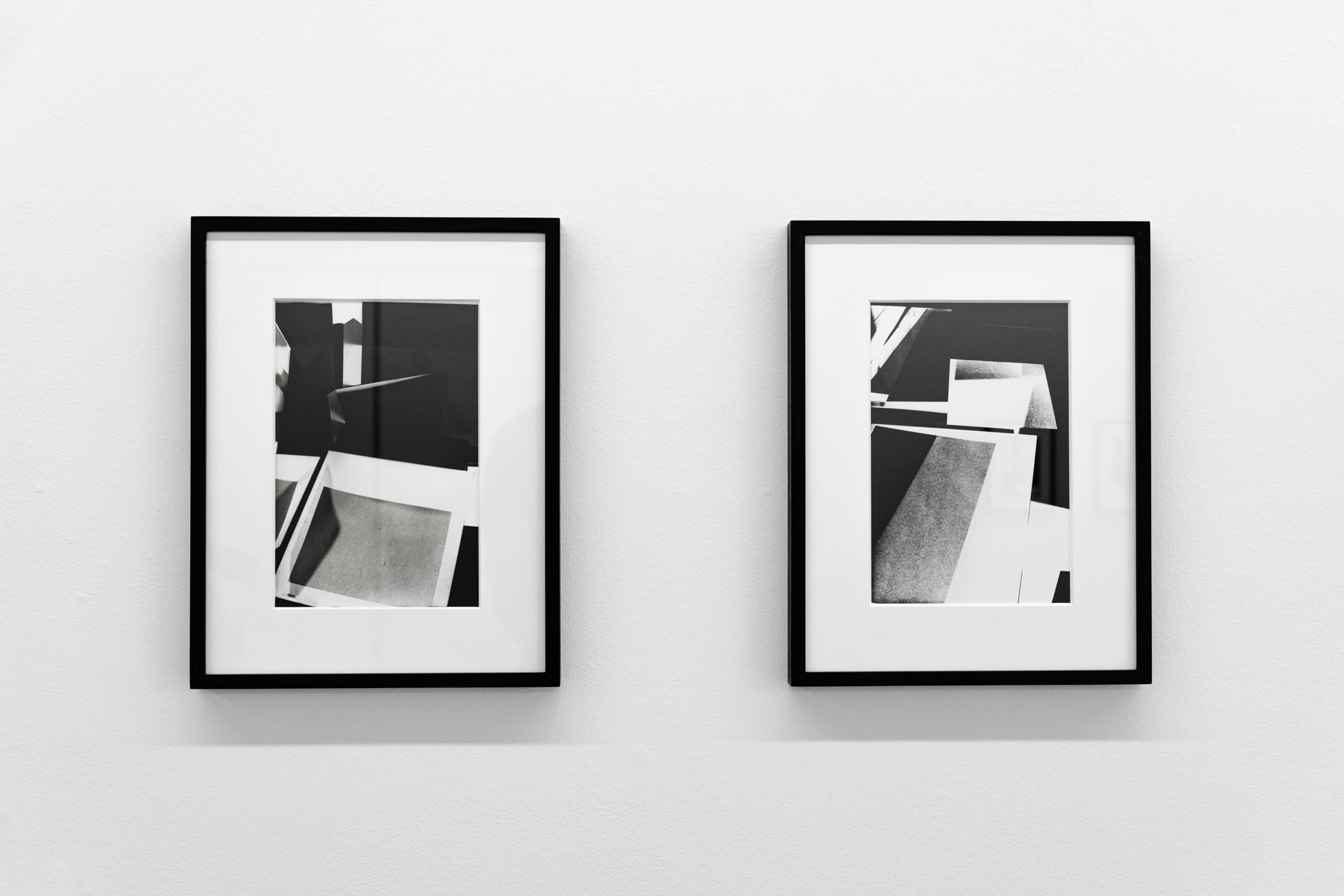
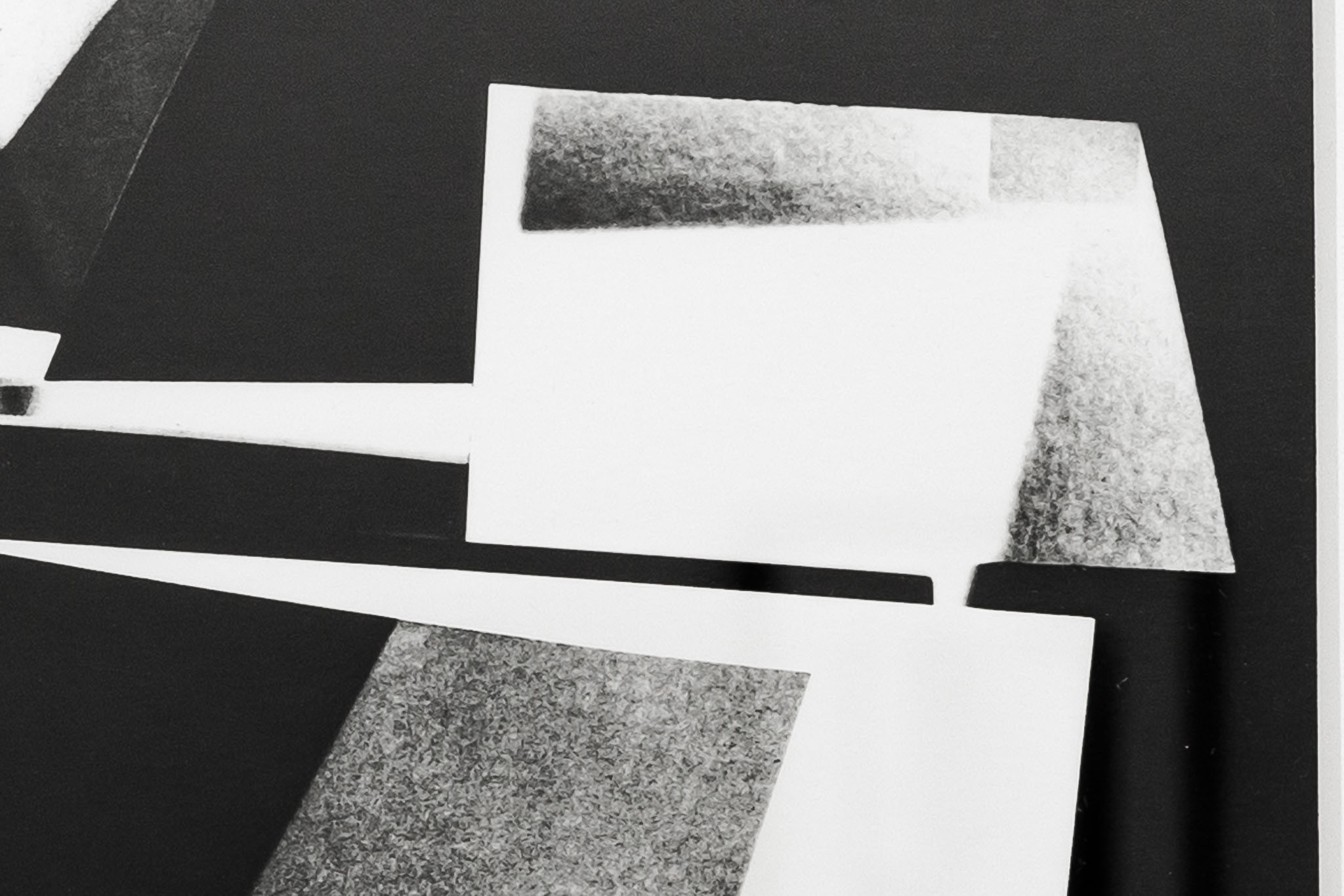
The current solo exhibition of Berlin-based artist Zora Janković (*1978) at "B-Part Exhibition" shows how multifaceted and at the same time reduced the principle of condensation in sculpture and image can be artistically conceived. By focusing in her works (marble, concrete and steel, photography) on the effects, even accidental ones, that the precise execution of artistic techniques in sculpture and photography can produce, Janković opens up mental and concrete spaces towards a concentrated formal understanding of supposedly figurative elements.
After "Konstrukt" and "Konkret", previous exhibitions by Zora Janković, now then: "Kompakt". When the artist was looking for a title for her current exhibition at "B-Part Exhibition", this term was immediately in the room - and this more than metaphorically, because "compact" already resonates with the idea of something material, spatially extended, sculptural. Not without reason - for the factor that the Latin prefix "com-/con-" can be used in the sense of "completely" points here to the completed work, the definitive statement, the artistic statement. That Janković's choice of title thus fell on the term, which focuses on the density of an object and initially puts questions of figuration on the back burner, is only logical in view of the works on view:
The motifs of the two series (photography, marble) and three individual works (concrete and steel), which are correspondingly distributed in the room, may indeed call up images in one's mind of relationships between the sculptures to be seen and images of existing architecture, for example, but questions of form and material are more decisive for Janković's works than clear references to architectural history. Thus the sculptures "MONUMENT II.11" and "MONUMENT II.13" can be read as a fundamentally different configuration of material in space, depending on the position of the viewer. What was just cantilevered and raised questions about stability and gravity, appears from a 90-degree rotated angle as naturally towering and actually compact. Here, the process of viewing also becomes a reflection on the process of production: what about the form is material- and technique-related, what appears to be deliberately shaped and planned, what has emerged, and what is the key to understanding the works? Rugged, straight, round, hollow, angular, massive and supple elements of form are what the artist has incorporated into her works, and in the interplay with the concrete elements, sometimes left raw by the casting, sometimes smoothly flattened, the sculptures reveal a multifaceted nature that, beyond what can be seen, refers in particular to the process of their creation. The colors in almost all shades of the black-and-white spectrum that emerge on the plaster material used for casting reinforce the effect of being confronted with objects whose subject is also that field in which plannability and chance meet.
A similar color spectrum as the "MONUMENT" sculptures is also used for the eight photographs of the "SERIES NF713": Here, Janković has documented small-format two- and three-dimensional elements she has produced from various materials, some of which have been processed in color, using a photographic process in which the film positives on view act like their negative counterparts. To the thus twisted difference of light-dark contrasts, Janković adds a component that is only immediately apparent to the trained eye: alternately, the subtractive primary colors yellow or magenta are used in each case in such a way that in the dialogue of the images with one another, the depicted, which remains abstract, sometimes has sharper, sometimes softer contours and surfaces. Not least the fact that the artist disposed of the elements used for the production of the pictorial motifs after the series was produced indicates that in this series, which also brings to mind photographic experiments exploring black-and-white contrasts from 20th-century avant-gardes, the sculptural is only a means to an end, the pictorial is central.
Mounted on the wall directly next to a window of the exhibition space, not without intention and with consideration for the changing incidence of light, are the four elements of Janković's latest series "RM1" - blocks cut from Swiss Cristallina marble and worked by the artist. Defined by the Zurich "Material Archiv" as "compact" due to the strong interlocking of the mineral grains, the material used by Janković is characterized primarily by a high light-reflecting potential. Taking advantage of this potential, Janković has treated the surfaces of the four marble blocks facing the exhibition space differently in such a way that, if one looks closely, a wide variety of light effects are created, while the rough shape of the blocks, which is partially irregular due to semicircles, creates shadow effects rather than light effects. Both together reinforce a condition in which the work exists as a hybrid of pictorial and sculptural series, which raises further questions about the formal understanding of the work as well as the role that marble, a rather unusual material for wall works, can play in this framework.
After "Konstrukt" and "Konkret", previous exhibitions by Zora Janković, now then: "Kompakt". When the artist was looking for a title for her current exhibition at "B-Part Exhibition", this term was immediately in the room - and this more than metaphorically, because "compact" already resonates with the idea of something material, spatially extended, sculptural. Not without reason - for the factor that the Latin prefix "com-/con-" can be used in the sense of "completely" points here to the completed work, the definitive statement, the artistic statement. That Janković's choice of title thus fell on the term, which focuses on the density of an object and initially puts questions of figuration on the back burner, is only logical in view of the works on view:
The motifs of the two series (photography, marble) and three individual works (concrete and steel), which are correspondingly distributed in the room, may indeed call up images in one's mind of relationships between the sculptures to be seen and images of existing architecture, for example, but questions of form and material are more decisive for Janković's works than clear references to architectural history. Thus the sculptures "MONUMENT II.11" and "MONUMENT II.13" can be read as a fundamentally different configuration of material in space, depending on the position of the viewer. What was just cantilevered and raised questions about stability and gravity, appears from a 90-degree rotated angle as naturally towering and actually compact. Here, the process of viewing also becomes a reflection on the process of production: what about the form is material- and technique-related, what appears to be deliberately shaped and planned, what has emerged, and what is the key to understanding the works? Rugged, straight, round, hollow, angular, massive and supple elements of form are what the artist has incorporated into her works, and in the interplay with the concrete elements, sometimes left raw by the casting, sometimes smoothly flattened, the sculptures reveal a multifaceted nature that, beyond what can be seen, refers in particular to the process of their creation. The colors in almost all shades of the black-and-white spectrum that emerge on the plaster material used for casting reinforce the effect of being confronted with objects whose subject is also that field in which plannability and chance meet.
A similar color spectrum as the "MONUMENT" sculptures is also used for the eight photographs of the "SERIES NF713": Here, Janković has documented small-format two- and three-dimensional elements she has produced from various materials, some of which have been processed in color, using a photographic process in which the film positives on view act like their negative counterparts. To the thus twisted difference of light-dark contrasts, Janković adds a component that is only immediately apparent to the trained eye: alternately, the subtractive primary colors yellow or magenta are used in each case in such a way that in the dialogue of the images with one another, the depicted, which remains abstract, sometimes has sharper, sometimes softer contours and surfaces. Not least the fact that the artist disposed of the elements used for the production of the pictorial motifs after the series was produced indicates that in this series, which also brings to mind photographic experiments exploring black-and-white contrasts from 20th-century avant-gardes, the sculptural is only a means to an end, the pictorial is central.
Mounted on the wall directly next to a window of the exhibition space, not without intention and with consideration for the changing incidence of light, are the four elements of Janković's latest series "RM1" - blocks cut from Swiss Cristallina marble and worked by the artist. Defined by the Zurich "Material Archiv" as "compact" due to the strong interlocking of the mineral grains, the material used by Janković is characterized primarily by a high light-reflecting potential. Taking advantage of this potential, Janković has treated the surfaces of the four marble blocks facing the exhibition space differently in such a way that, if one looks closely, a wide variety of light effects are created, while the rough shape of the blocks, which is partially irregular due to semicircles, creates shadow effects rather than light effects. Both together reinforce a condition in which the work exists as a hybrid of pictorial and sculptural series, which raises further questions about the formal understanding of the work as well as the role that marble, a rather unusual material for wall works, can play in this framework.
The B-Part Exhibition space accompanies the future development of the Urbane Mitte Am Gleisdreieck with artistic autonomy and thus at the same time enters into a dialogue with the overarching themes of the overall project - forms of New Work, Co-working, Culture and Sport - and creates synergies between artistic, cultural and social approaches. The artistic director of the B-Part Exhibition is Rüdiger Lange (loop - raum für aktuelle kunst).
